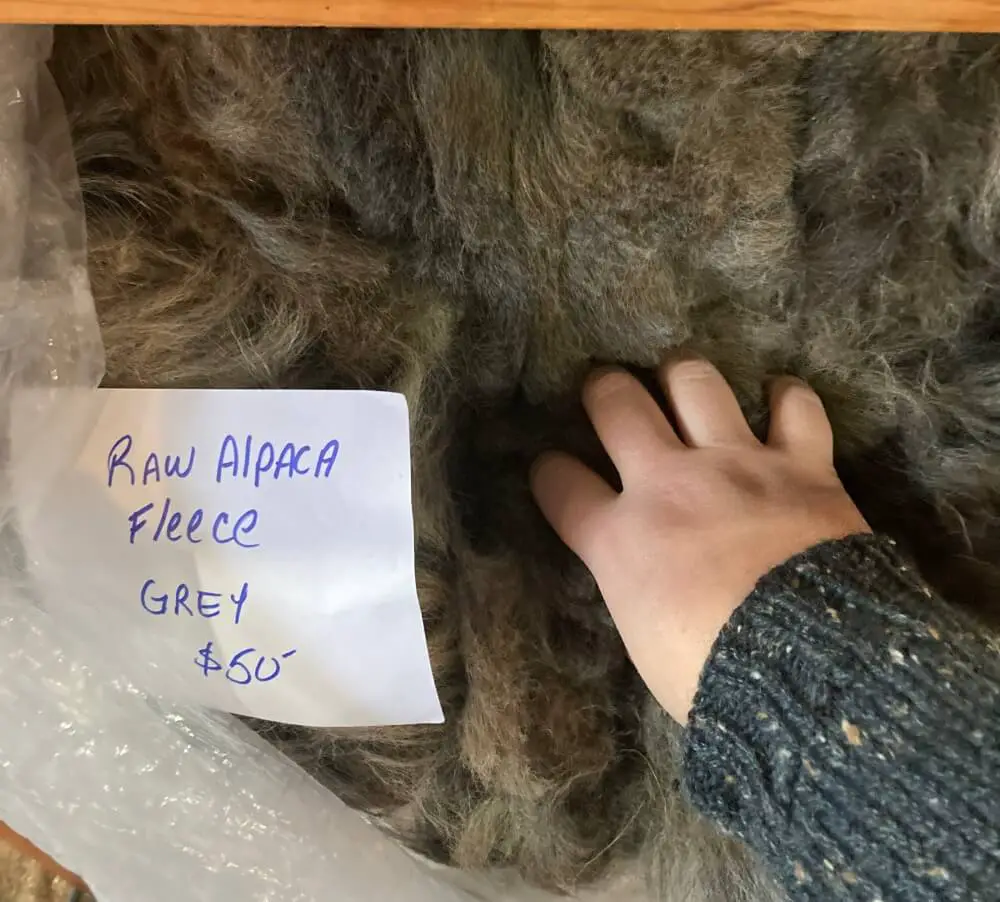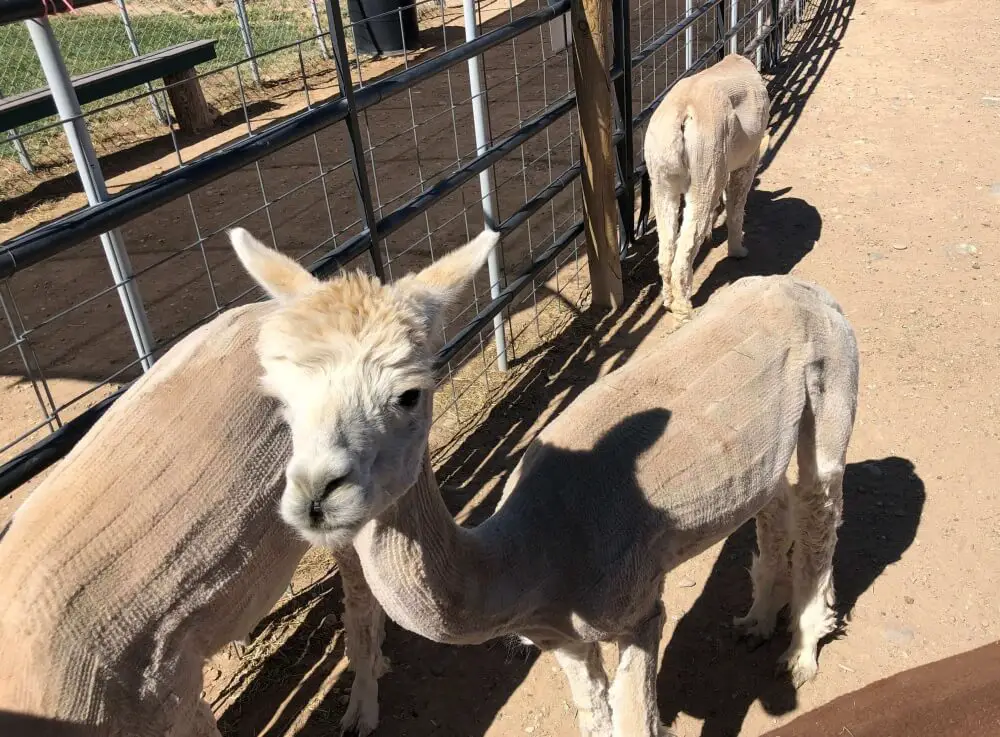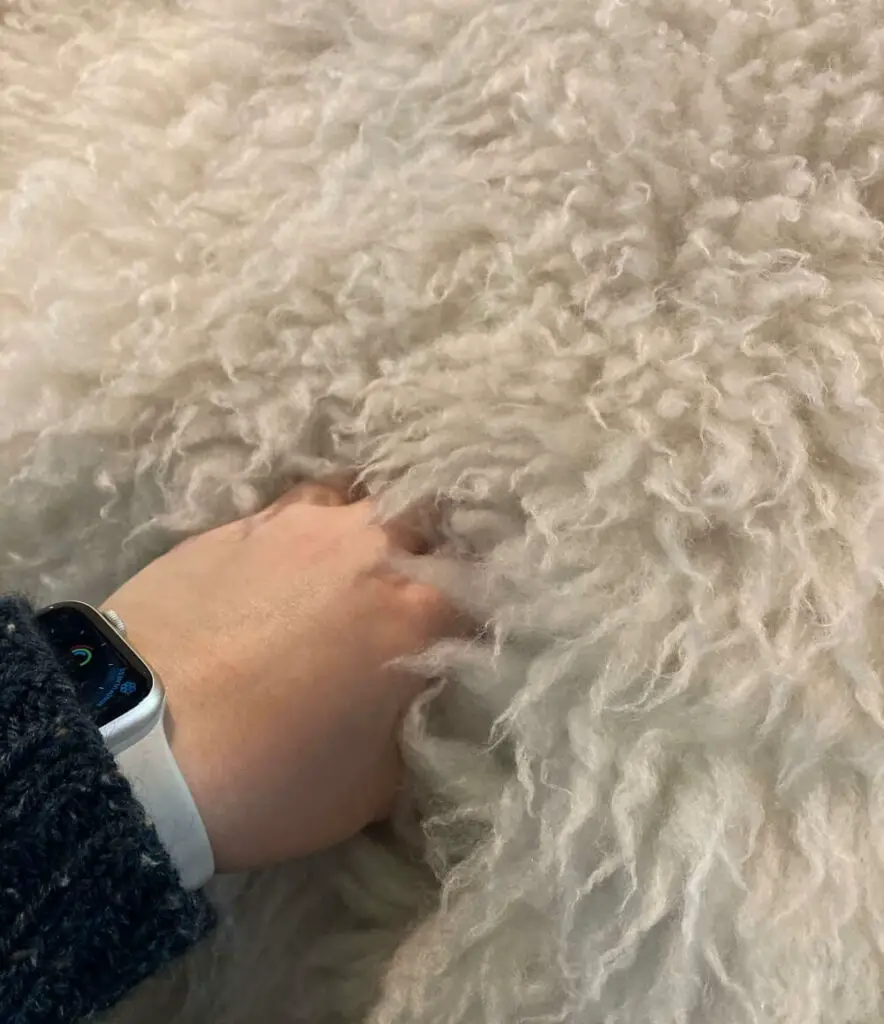Whether you’re a fiber enthusiast or you’re looking to buy a wool garment, you’re here because you want to know the difference between alpaca fiber and sheep wool.
Sheep wool is a crimped fiber that is water resistant, odor resistant, stays warm when its wet, and is soft. Alpaca Fiber has two different types. Suri Alpaca fiber is smooth and durable with no spring or crimp. Huacaya Alpaca fiber is more similar to wool since it has spring and crimp. Alpaca fiber is warm, durable, lightweight, and warm.
I know these two types of fiber have a lot in common, but each one has specific things that they’re better suited for. So, let’s really dig in and learn the differences between alpaca fiber and sheep wool.
Table of Contents
Alpaca Fiber Vs Sheep Wool

Alpaca fiber and sheep wool are both great fibers and I don’t think one is better than the other. Each fiber has some benefits that make it better for certain situations as opposed to others.
In comparison to synthetic fibers, alpaca and wool offer a huge variety of benefits that synthetic fiber just can’t compare to.
Before we dig in, there’s one thing you need to know. A lot of people may refer to alpaca fiber as alpaca wool. In the yarn, fiber, and textile world, it’s usually just called alpaca fiber, so that’s how I will refer to it from here on out.
So, all that being said, let’s compare 6 aspects of alpaca fiber and wool fiber so you can decide which fiber is better suited for your needs.
Warmth
Alpaca fiber and sheep wool are both great at keeping you warm and make wonderful base layers and winter clothing like alpaca socks.
One of the best insulators in the world is air. Alpaca has hollow fibers which means that alpaca fiber is a great insulator since it can trap air.
Wool is not hollow, however, wool has a lot of crimp meaning that the individual fibers are wavy. With all the crimp that wool has, it traps warm air all throughout the yarn and fabric that’s made out of it.
These pockets of air are what make it a great insulator.
Durability
Durability has more to do with the breed of the animal or the construction of the garment than the fiber itself.
Both alpaca fiber and wool fiber tend to felt or shrink if they’re agitated while they’re wet.
However, there are some breeds of sheep, such as Lincoln Longwool, and breeds of alpaca, such as Suri, that are less prone to felting. Check out my post about breeds of wool sheep for more information about breeds of sheep different from merino.
Another aspect of durability is how long the fabric lasts. Again, it depends more on the construction of the yarn or fabric than it does the fiber itself.
Both extremely durable yarn and extremely delicate yarn can be made out of both wool and alpaca.
If durability is what you’re worried about, look at the construction of the garment and yarn as opposed to what fiber it’s made out of.
Water Resistance
Unlike Alpacas, sheep produce lanolin which is a waxy substance that sheep produce which coats the wool and protects it from water.
Most lanolin gets washed out in the processing of raw wool, but some can remain and give the wool a water repellant quality.
Also, wool does not absorb water as readily as alpaca fiber because it’s not hollow.
Alpaca fiber is hollow which makes it breathable and great for summer garments, but the hollow aspect means it absorbs water easily.
Odor Resistance
According to World’s Finest Wool, alpaca fiber is odor resistant because it’s hollow. The fiber will absorb sweat and other smells and these will be evaporated through the hollow core of the fiber.
Because of this quality, alpaca socks are becoming more popular.
Wool is also odor-resistant because of the pockets of air that are created from the wool crimp.
These pockets of air will absorb sweat and moisture and you won’t even notice that the wool has absorbed moisture. This is because wool has a much higher saturation point than other fibers.
The saturation point is the point at which a fiber or fabric cannot absorb any more liquid.
Moisture Wicking
Alpaca fiber will absorb moisture off your skin because it’s hollow. This not only helps keep odors down but also helps keep you dry if you’re sweating or getting wet.
Wool also absorbs moisture off your skin since it will absorb sweat off your skin into the air pockets that it has.
This makes both of them great options for base layers of clothing and winter clothes.
Allergic Reactions
This one is a little bit of a tricky subject. People can have allergies to both wool and alpaca.
One common misconception is that people are allergic to wool. A wool allergy is actually quite rare, more commonly people are allergic to the lanolin that is produced by the sheep.
Most of this is washed out when processing the raw wool into fiber but some can still remain.
Alpaca allergies are more common than wool allergies.
If you have sensitive skin or other skin allergies, the best way to find out if you are allergic to a certain fiber or yarn is to tie a small string of it around your wrist. This is also a great way to tell if a garment made out of a specific yarn or fiber will make you itch.
If that little string makes you itch or if you notice a rash starting, then you should avoid that fiber.
There’s the side-by-side comparison of alpaca fiber vs sheep wool. You can decide which fiber is best for your needs.
There are a ton of other fibers out there too, check out my other post for a comparison of wool vs cashmere and wool vs mohair.
Types of Alpaca Fiber

If you buy alpaca fiber or buy a garment made of alpaca fiber, there are three main types of alpaca fiber that you’ll be getting. These alpacas can produce alpaca fleece in a variety of different colors. Most alpacas are raised in South America and Australia.
Huacaya Alpaca
The Huacaya Alpaca fiber comes from the Huacaya Alpaca which is the most common breed of Alpaca. These alpacas are raised mostly in South America and Australia.
Huacaya Alpaca fiber is short and soft with a micron count of 23-26.5 microns. Micron count is a measurement of the width of the individual fibers. The lower the micron count, the thinner and softer the fiber.
The fiber has a crimp which gives it a springy texture when made into yarn or fabric. This springy characteristic makes it a great alternative to wool since most other fiber alternatives lack the springiness that wool has.
Suri Alpaca
Suri alpaca is another breed of alpaca but it is much less common than Huacaya, only 10-20% of the Alpaca population is Suri.
Suri alpaca fiber is long and smooth which means the yarn or fabric created from it is shiny and has a drape closer to silk than wool.
Fiber from the Suri alpaca is 24-28 microns which means it’s not as soft as Huacaya fiber but it is more durable.
Baby Alpaca
The last type of alpaca fiber comes from baby alpaca. Contrary to what it sounds like, baby alpaca fiber is not sheared off a baby alpaca.
Baby alpaca is classified by the fineness of the fiber as opposed to the age of the animal.
However, because the diameter of the alpaca hairs gets larger as the animal ages, baby alpaca fiber is typically gained from animals that are no more than two years old.
Baby alpaca fiber has a micron count of 14-23 microns making it the thinnest and softest fiber of all alpaca fibers.
It is considered one of the most luxurious fibers in the world.
Now that you know more about the kinds of alpaca fiber, let’s talk about some of the benefits that all alpaca fiber has.
Types of Wool

There are so, so, so, so many types of sheep wool, and each breed of sheep is bred with a specific purpose or quality. However, there are far too many different breeds of sheep for me to mention all of them in this one post.
For that reason, I’m only going to focus on Merino wool. Merino wool is the most common type of wool used for garments, spinning fiber, and wool yarn.
A lot of Merino wool used in yarn and textiles comes from New Zealand.
Merino sheep are bred for their luxurious fiber and nothing else. So, let’s talk a little bit about Merino wool.
Merino Wool
Merino sheep’s wool is soft and springy, this fiber is known for its great crimp which gives it this springy quality.
In addition to being springy, Merino fibers have a micron count of 15-25 microns making it just as soft as the Alpaca fibers mentioned above.
Merino also has a great warmth-to-weight ratio, it’s very light but it has the same insulating power as all other wools.
One of the other benefits of Merino wool is that it’s extremely common and easy to find. If you have an object that’s made out of wool but it doesn’t say which breed, odds are it’s Merino wool.
With all of these benefits, it’s no surprise Merino is the most commonly used wool for garments, spinning fiber, and yarn.

